
Ingredient lists and food labels play an imperative role in the lives of people living with food allergies or intolerances like celiac disease. The only way to prevent a potentially serious or life-threatening reaction is to avoid ingesting or coming into contact with specific allergens. There is no questioning the fact that reliable and complete ingredient lists are essential to living confidently with food allergies.
Mandatory: Ingredient Lists
The Food Allergen Labeling and Consumer Protection Act (FALCPA) requires that the labels of foods (including conventional foods, dietary supplements, infant formula, and medical foods) containing the top food allergens must list the allergen in plain language.
The top allergens include milk, eggs, fish, crustacean shellfish, peanuts, tree nuts, wheat and soy. These ingredients must be listed if they are present in any amount, even in colors, flavors, or spice blends.
There are 3 acceptable ways that allergens can be listed:
- in the ingredient list
- the word “Contains” followed by the name of the major food allergen (for example, “Contains milk, wheat”)
- in the ingredient list in parentheses (for example, “albumin (egg)”)
Manufacturers must list the specific nut (e.g., almond, walnut, cashew) or seafood (e.g., tuna, salmon, shrimp, lobster) that is used.
Voluntary: “May Contain” Warnings
Cross-contamination, or cross-contact, happens when a food allergen accidentally gets into another food. This is a significant concern for people with food allergies, because ingesting even a very small amount of an allergen can cause an allergic reaction. Cross-contamination can occur in the production of food, through production lines shared with other allergens or ingredients from suppliers.
Manufacturers are NOT required to label whether a product may be cross-contaminated with an allergen. In some instances food manufacturers choose to include precautionary statements, but these warnings have no regulatory requirements and can be inconsistent. The only warning that has meaning is the “may contain …” statement. All other warnings, such as “made in a facility that also processes …“ can only be understood by contacting the company to find out whether cross-contamination may be an issue.
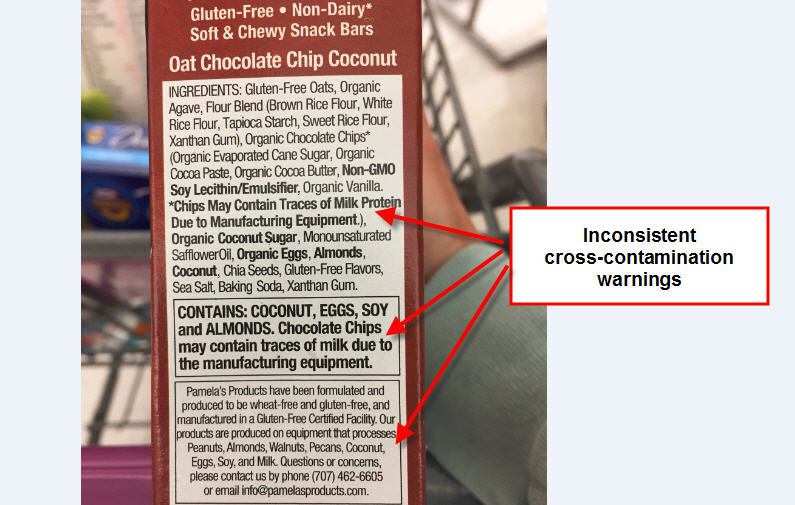
Cross-contamination warnings are not mandatory or regulated, so when they are provided there can be many inconsistencies with how they are written. (Photo by: Laurie McDowell Senio)
Certified Gluten-Free
A gluten-free logo on packaged goods means that the manufacturer has voluntarily opted to be certified as gluten-free by the Celiac Association. These products undergo analytical testing to ensure that the gluten levels are less than 20ppm, and the manufacturer is audited annually by independent third party auditors to verify that they meet the Celiac Association program’s requirements.
If you have a wheat allergy it’s important to note that “gluten-free” does not necessarily mean “wheat-free.” Gluten is present in wheat and other grains such as oats, barley, rye and triticale. People that are allergic to wheat can react to wheat gluten proteins, and other wheat proteins which may or may not be present, even if the product is certified gluten-free.
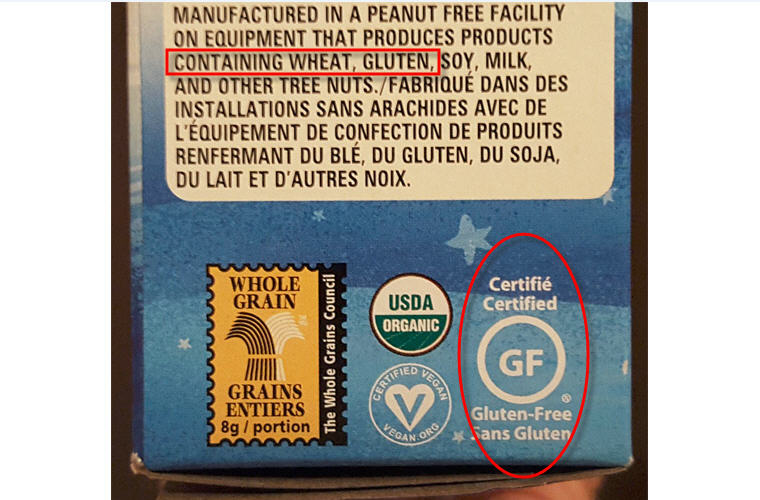
Products that are Certified Gluten-free can contain trace amounts of wheat or gluten.
Certified Vegan
Manufacturers can voluntarily opt to be Certified by Vegan.org. Products that display the Certified Vegan logo do not contain animal products or byproducts and have not been tested on animals. By definition, these products would be dairy-free and egg-free, but since the use of dedicated vegan production plants is not a requirement for certification, some products may have been produced on shared machinery and may contain trace amounts of eggs or dairy. It is important to check with the company on their manufacturing processes for any potential allergen cross-contamination.
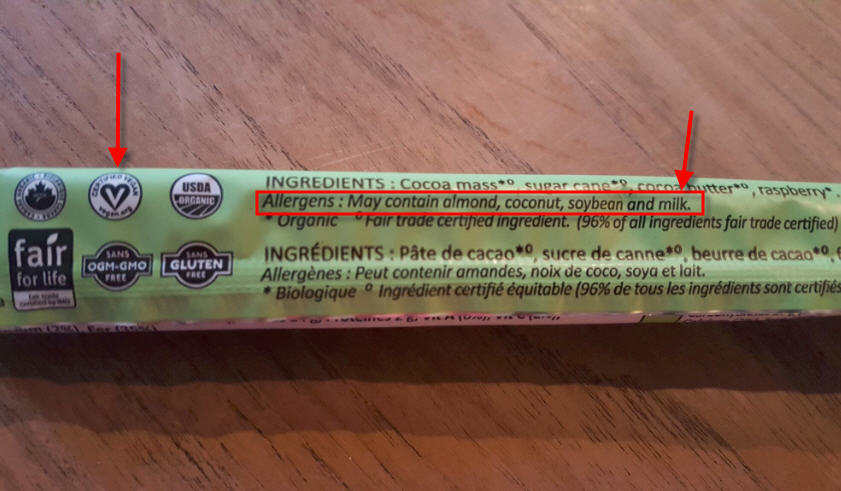
Certified Vegan items may contain trace amounts of milk or egg as the use of dedicated vegan production plants is not a requirement for certification.
Kosher Labels and Dairy Allergies
One of the many laws of keeping a kosher diet is that milk and meat products cannot be eaten or manufactured together. Kosher foods are labelled with a “D” or the word “Dairy” after the Kosher symbol if they contain dairy products, while kosher foods that are considered neutral (i.e. not “dairy” or “meat”) have the word “Pareve” or “Parve” after the Kosher symbol.
People with dairy allergies may be tempted to use kosher symbols as an indicator for the presence of milk in products, but this can be risky as kosher label standards don’t account for cross-contamination. Kosher labeling is designed for people of the Jewish faith to maintain a kosher diet, and is not intended for those with food allergies.
Allergen-Free Claims
Marketers often add symbols or descriptions with statements like nut-free, dairy-free, soy-free, or any other allergen-free. If a manufacturer makes this type of claim, they are responsible for making sure that there is absolutely no amount of that food allergen in the product. These symbols are used to attract you to the product, but should never replace reading the entire ingredient list.
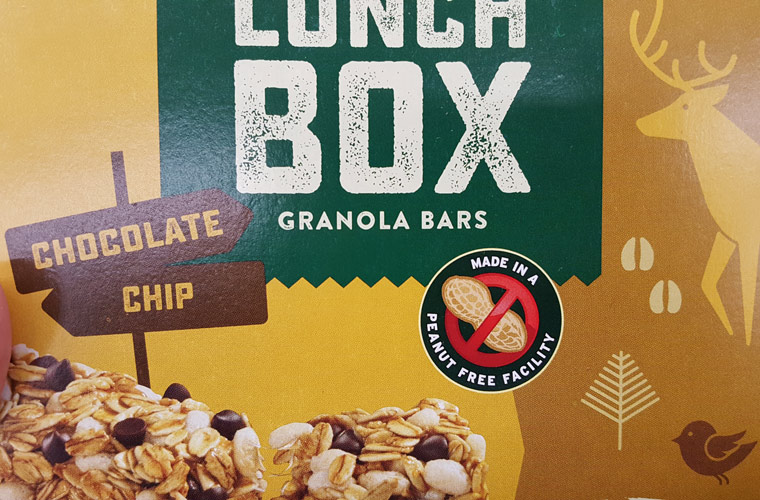

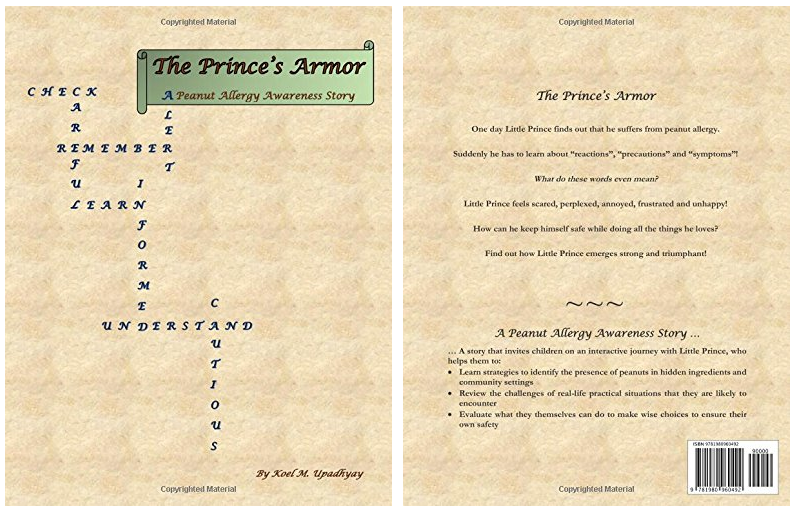


COMMENTS